| HOME |
|---|
AURIGA
The Charioteer
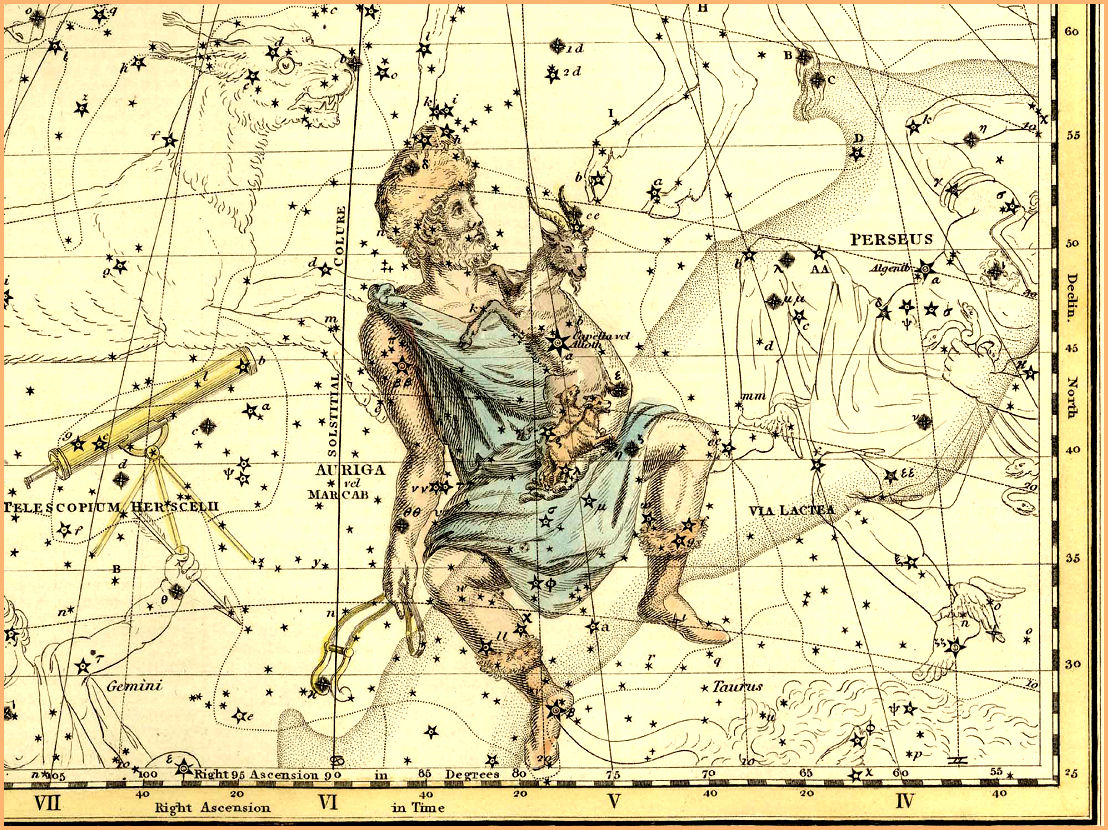
Auriga - Celestial Atlas by Alexander Jamieson - 1822
| HOME |
|---|

With the tip of the bull's horn seemingly piercing his ankle, Auriga, the charioteer, sits astride the Milky Way. The name Auriga is Latin for charioteer, as the constellation resembles the pointed helmet worn by ancient chariot drivers, and the figure is often depicted holding the reins of his horses. It is said Auriga represents the Greek inventor of the four horse chariot, Erichthonius (also Erechtheus), who used his chariot to win many battles, and eventually became King of Athens. He was placed in the sky to honor his great deeds, and his devotion to the goddess Athena.
Auriga, the charioteer, was also a goatherd, and since antiquity has been depicted with a goat in his arms. Not just any goat, but the famous Amalthea, who suckled the infant Zeus ( Jupiter). It was her horn that became the original cornucopia, a symbol of unending nourishment. When Jupiter became king of the gods, he placed her in the sky safe and protected in the arms of Auriga.
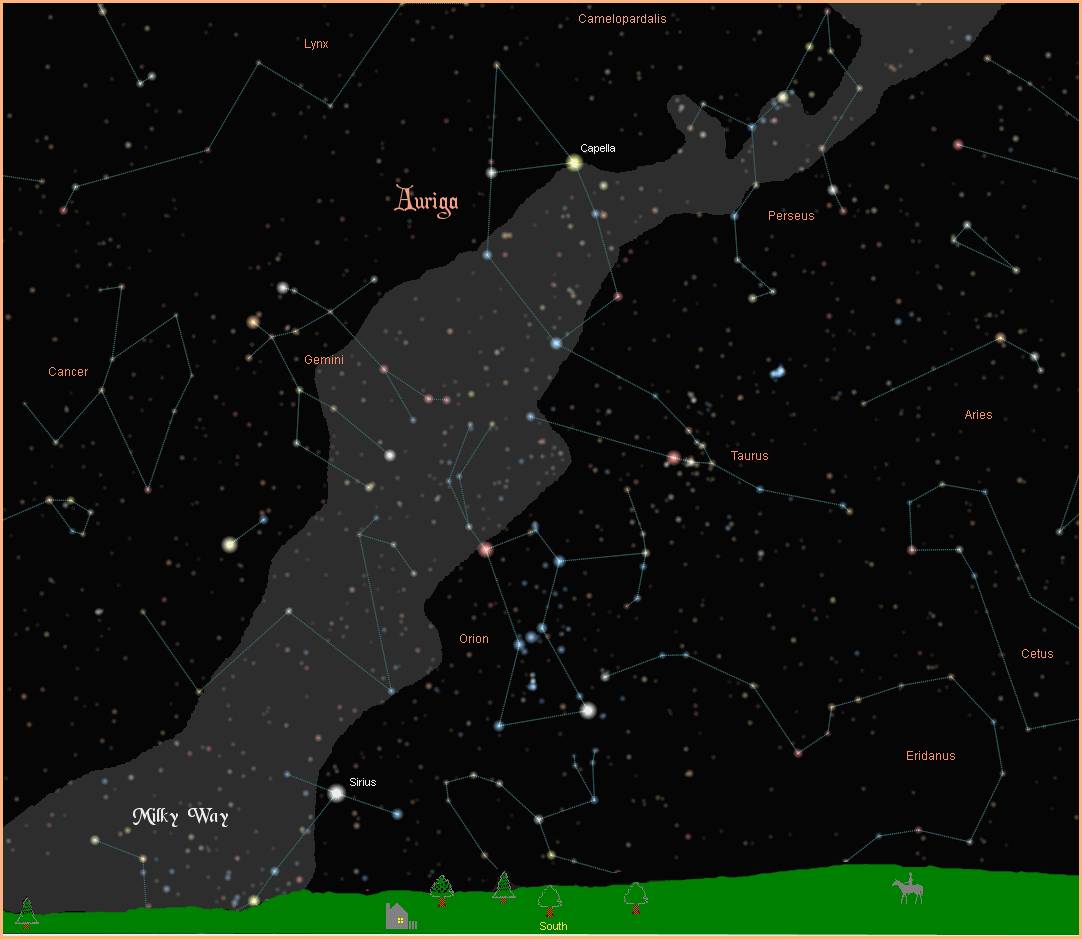
Auriga contains the sixth brightest star in the sky: Capella, the goat star. The name is Latin for little she goat. It shines brilliantly at magnitude 0.06, and is the most northerly of all the first magnitude stars, not visible below 44 degrees south latitude. Capella is a binary system in which both components are binaries as well, resulting in a quadruple star system. The primary pair are both G class yellow giants in close orbit. The companion pair are both M class red dwarfs. The Capella star system is relatively close, about 46 light years away.
Beta Aurigae is named Menkalinan, from the Arabic for the shoulder of the rein-holder. It is a very close binary pair of A1V blue/white main sequence stars, with a combined magnitude of 1.9, located about 81 light years away.
The star named Alnath used to bear the Arabic name of Al Kab dhil Inan, the heel of the Rein-Holder, and it was shared with the constellation Taurus. When constellation boundaries were formalized in 1930, the star was officially allocated to Taurus alone, with the designation Beta Tauri.
Iota Aurigae is called Hasseleh from the Greek for the hoof. It is a K3III orange giant, with a magnitude of 2.7, and is 500 light-years away.
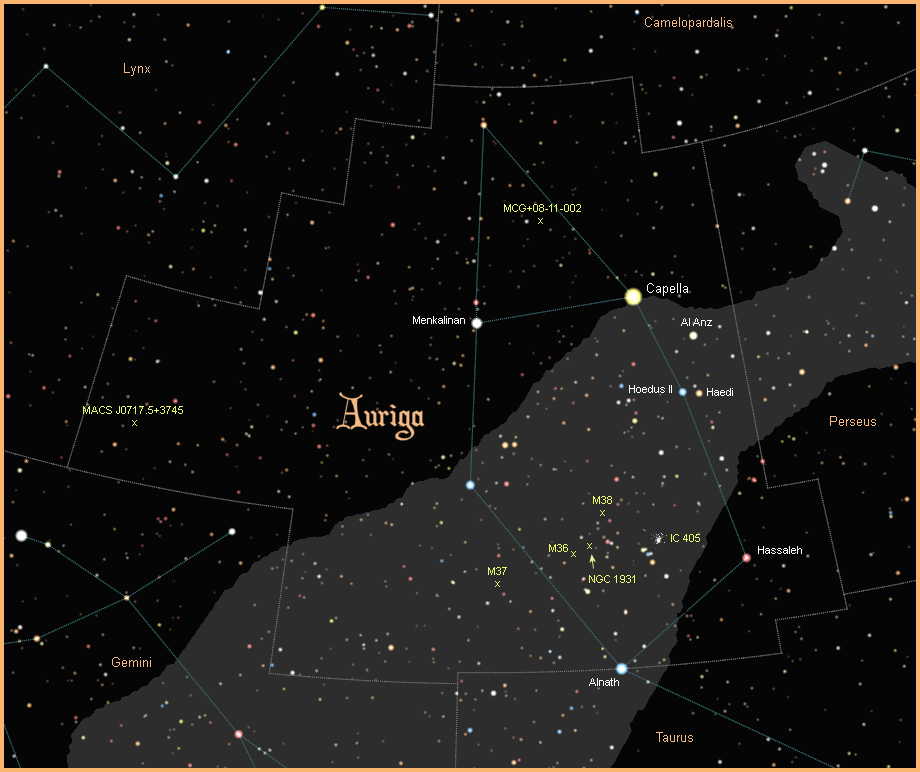
The three stars in a triangle just below Capella are called The Kids. They represent the baby goats of Amalthea, hiding in the dense celestial foliage of the Milky Way.
At magnitude 3.03, the brightest of the trio is Epsilon Aurigae, named Al Anz, taken from the Arabic "Al Maaz" the he goat, originally meant to compliment Capella, the she goat. Now included as one of Capella's three kids, Al Anz is a famous eclipsing binary about 2,000 light years away that has been under study for two hundred years. Every 27.1 years the light from this system fades to half and stays that way for two years, and then returns to normal, regular as clockwork. Analysis of the light, however, yielded conflicting data that led to much imaginative speculation as what kind of odd couple this binary was. The truth, finally unveiled by NASA's Spitzer Space Telescope, turned out to be stranger than fiction. One of the binary pair is a dying giant F class star, and the other is a dwarf B class star surrounded by a dusty disc of debris almost 800 million miles (1,280 million kms) in diameter.
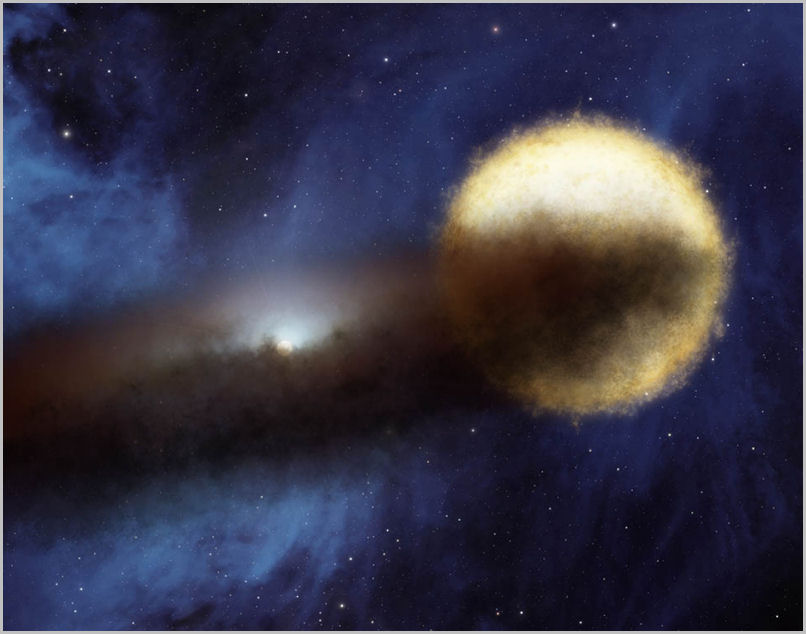
Zeta Aurigae is Haedi, Latin for the kids. Like the much brighter Al Anz, it is an eclipsing binary, albeit with a much less dramatic magnitude change. The binary pair include a K4II orange bright giant, and a B5V blue main sequence star that eclipse every 2.66 years, their combined magnitude subtly and briefly dropping from 3.69 to 3.99. The system is 776 light years away.
Eta Aurigae is Hoedus II Latin for the second kid. At a distance of 243 light years it is the closest of the three kids, a B4V blue main sequence star with a magnitude of 3.18.
Auriga contains seven stars that support planetary systems. The stars are all beyond the limits of naked eye observation, and the planets so far are all gas giants larger than Jupiter. For more information on these and other extrasolar planets, visit NASA's New Worlds Atlas, and The Open Exoplanets Catalogue.
There are three Messier objects strung through the centre of Auriga, all open star clusters. M36 (NGC 1960) is a compact grouping with a magnitude of 6.3. Measuring 14 light years across, it contains about 60 mostly hot, young, blue stars, making it a relatively young cluster about 25 million years old. It is 4,100 light years away.
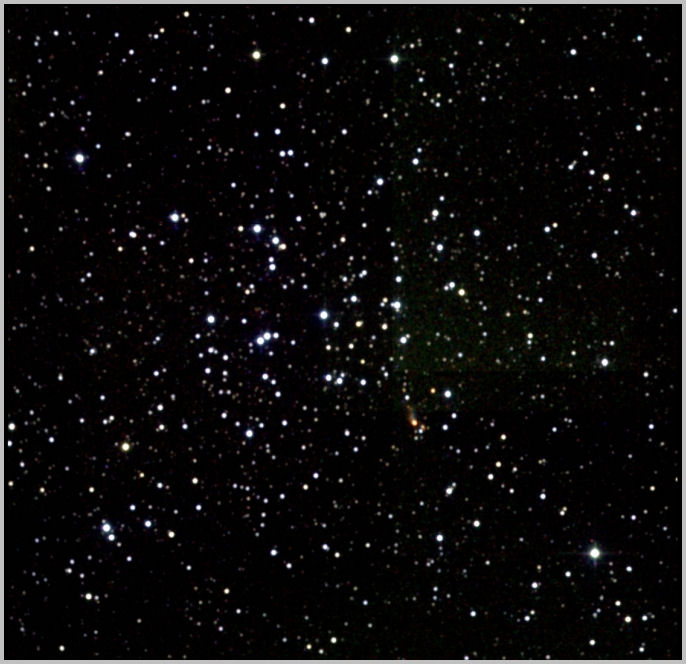
Slightly brighter at magnitude 6.0 is M37 (NGC 2099). Measuring 22 light years across, it is thought to contain up to 500 stars, with many aging red giants, giving the cluster an age of about 300 million years. It is 4,400 light years away.
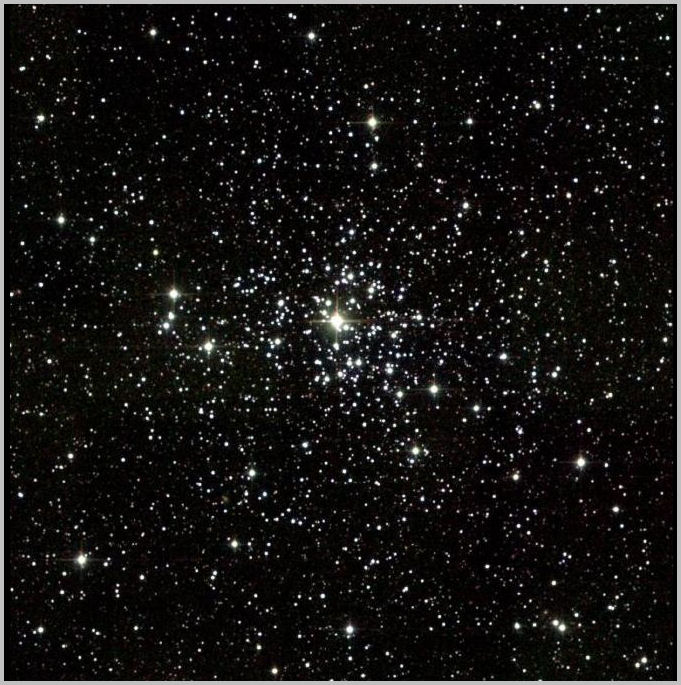
The dimmest of the three clusters at magnitude 7.3 is M38 (NGC 1912). It measures 25 light years across, and is estimated to contain about 100 stars around 220 million years old. The cluster is 4,200 light years away.
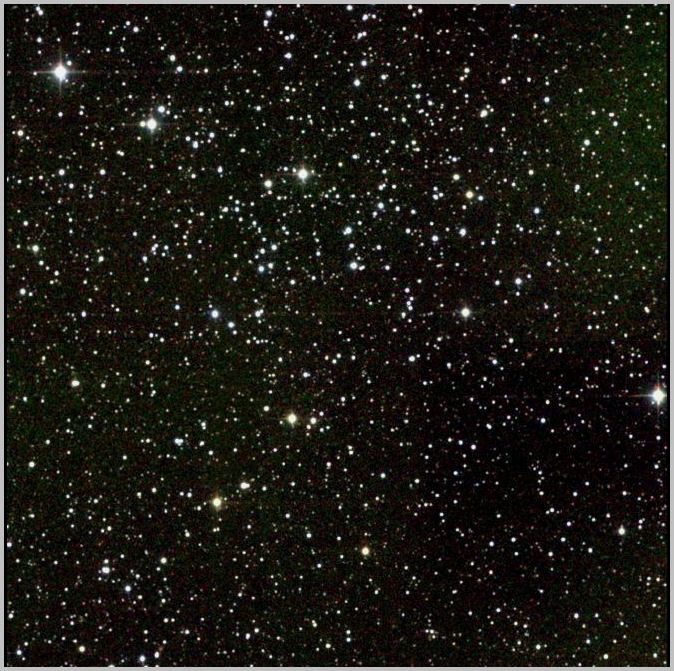
Known as the Flaming Star Nebula, and designated IC 405 is a bright emission/reflection nebula with a magnitude of 5.9. It is five light years across, and 1,500 light years away. The star at the centre of the nebula is AE Aurigi, classified as a runaway star due to its contrary high speed motion across the sky, traced back to the Orion Nebula, where it originated.
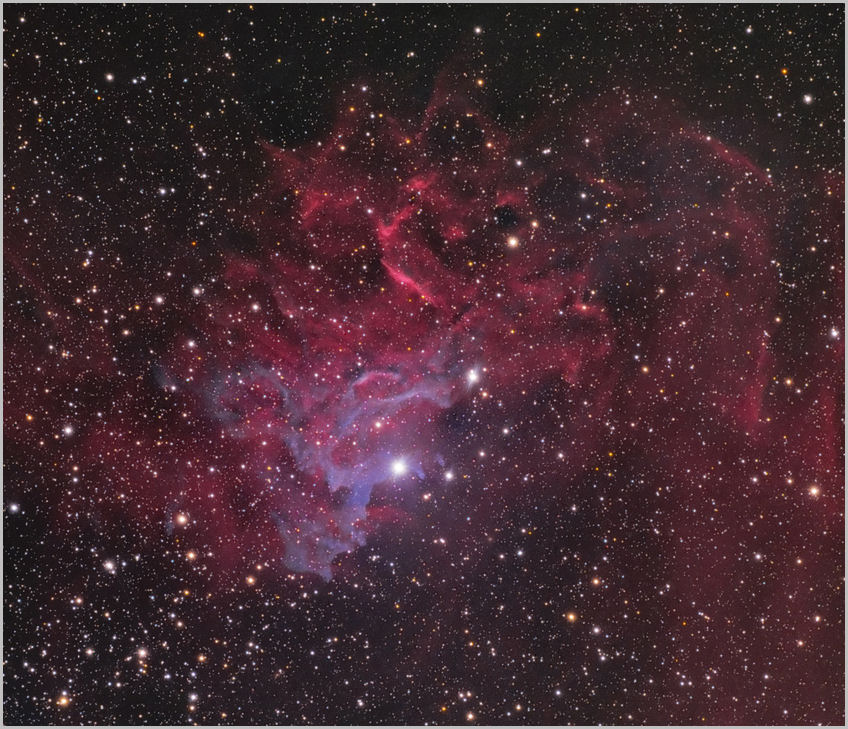
From about 7,000 light years away with a magnitude of 10.1, NGC 1931 is a combination reflection/emission nebula where new stars are being born.
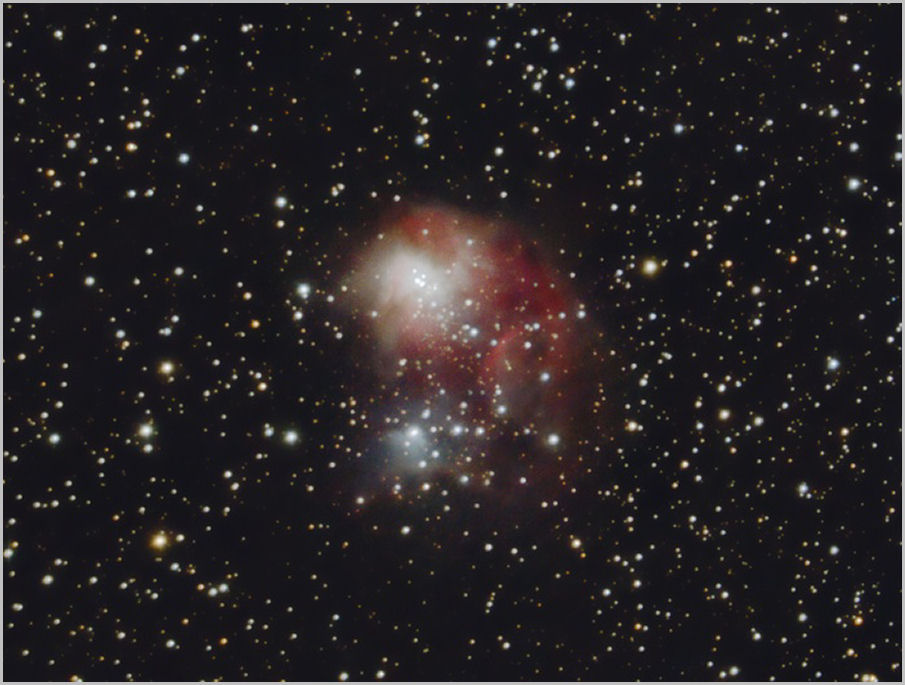
At the very great distance of 250 million light years, the Hubble Space Telescope has found an oddly shaped galaxy designated MCG+08-11-002. The theory is that the odd shape is the result of a long ago merger with another galaxy.
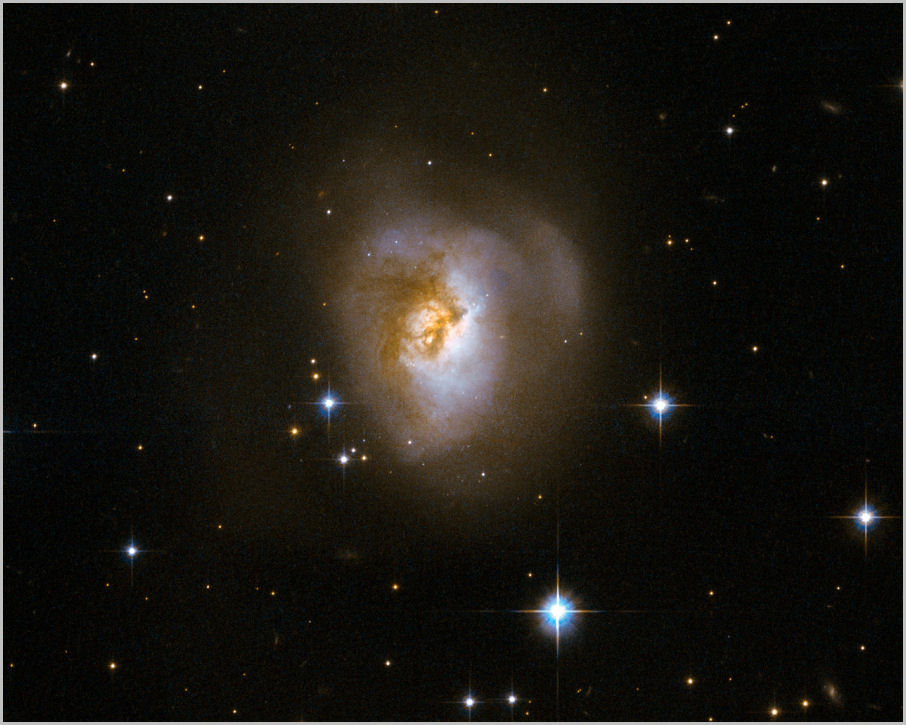
In the image below there are only about a dozen individual stars. Every other speck of light - too many to count - are all far away galaxies containing hundreds of billions of stars. Detected by the MAssive Cluster Survey, and named MACS J0717.5+3745, it is a merger of four separate galaxy clusters with a combined mass powerful enough to bend the fabric of space/time. This huge conglomeration of galaxies resides at the incomprehensible distance of 4.5 billion light years.
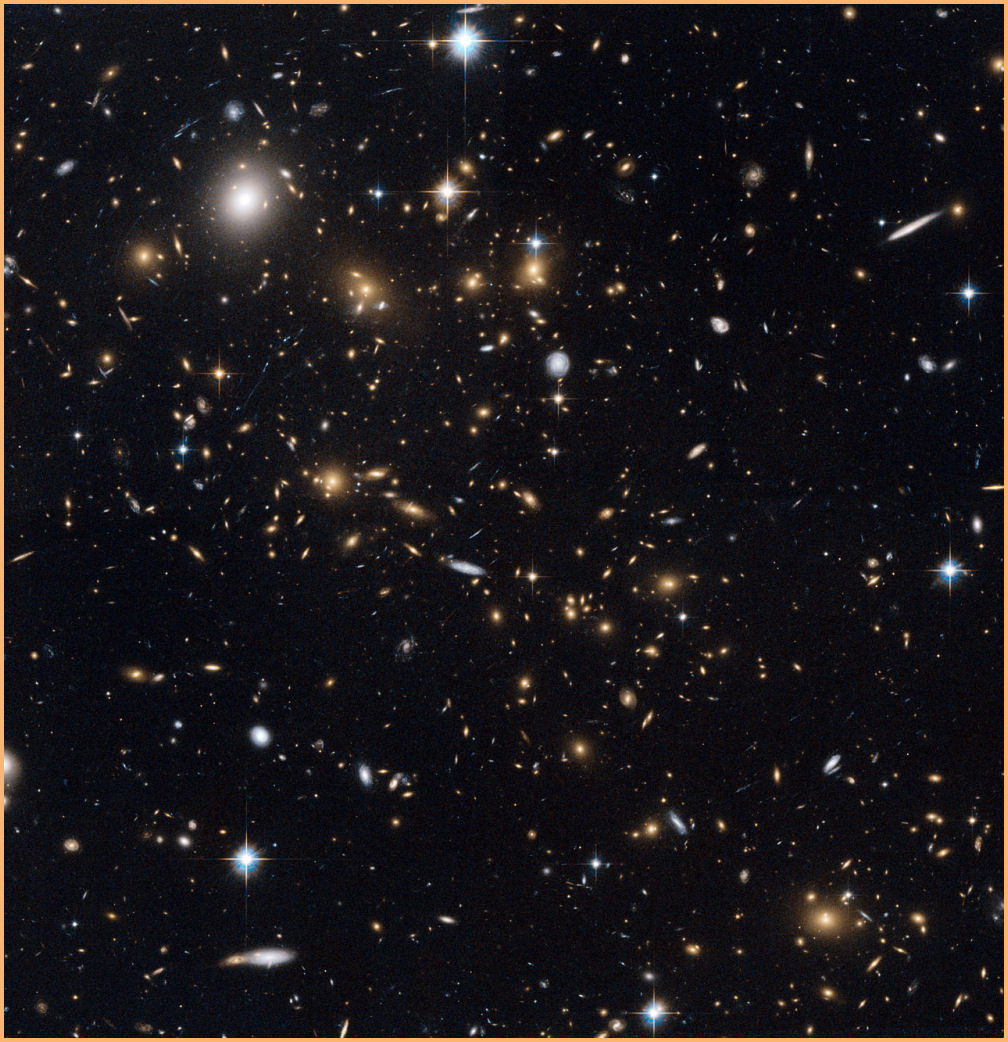
|
|
|
|
|
|